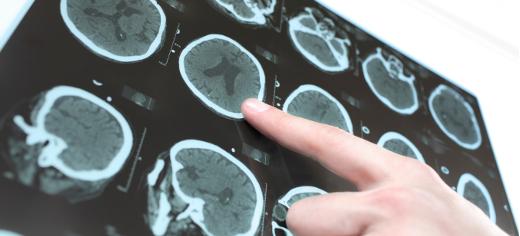
Researchers have discovered a mechanism linked to the brain damage often suffered by stroke victims—and are now searching for drugs to block it.
Strokes happen when the blood supply to part of the brain is cut off but much of the harm to survivors’ memory and other cognitive function is often actually caused by “oxidative stress” in the hours and days after the blood supply resumes.
A team from the University of Leeds and Zhejiang University in China studied this second phase of damage in laboratory mice and found a mechanism in neurons that, if removed, reduced the damage to brain function.
Co-author Dr Lin-Hua Jiang, of the University of Leeds’ School of Biomedical Sciences, said: “Until now, much of the drug research has been focussing on the direct damage caused by the loss of blood flow, but this phase can be hard to target. The patient may not even be in the ambulance when it is happening. We have found a mechanism that is linked to the next phase of damage that will often be underway after patients have been admitted to hospital.”
The study, published in the journal Cell Death and Disease and supported by a strategic partnership between the University of Leeds and Zhejiang University, looked at the damage caused by the excessive production of chemicals called “reactive oxygen species” in brain tissues immediately after blood supply is re-established. In a healthy brain, there are very low levels of reactive oxygen species, but the quantity dramatically increases after a stroke to levels that are harmful to neurons.
Dr Jiang said: “We identified an ‘ion channel’ in the membranes of neurons, called TRPM2, which is switched on in the presence of the reactive oxygen species. Basically, an ion channel is a door in the membrane of a cell that allows it to communicate with the outside world— TRPM2 opens when the harmful levels of reactive oxygen species are present and we found that removing it significantly reduced neuronal cell damage.”
The researchers compared the effects of strokes on mice with TRPM2 with a transgenic strain without it.
“In the mice in which the TRPM2 channel does not function, the reactive oxygen species are still produced but the neurons are very much protected. The neuronal death is significantly reduced. More importantly, we observed a significant difference in brain function, with the protected mice demonstrating significantly superior memory in lab tests,” Dr Jiang said.
“This study has pinpointed a very promising drug target. We are now screening a large chemical library to find ways of effectively inhibiting this channel. Our ongoing research using animal models is testing whether blockage of this channel can offer protection again brain damage and cognitive dysfunction in stroke patients,” Dr Jiang said.
The research was funded by the Royal Society, Alzheimer’s Research UK, the National Natural Science Foundation of China and the National Basic Research Program of China.
Image information: CT scan of a patient.
Further information
Contact: Chris Bunting, Senior Press Officer, University of Leeds; phone: +44 113 343 2049 or email c.j.bunting@leeds.ac.uk.
The full paper: M. Ye et al,‘TRPM2 channel deficiency prevents delayed cytosolic Zn2+ accumulation and CA1 pyramidal neuronal death after transient glo Q1 bal ischemia’ will be published in Cell Death and Disease on 27 November 2014 [DOI:10.1038/CDDIS.2014.494].